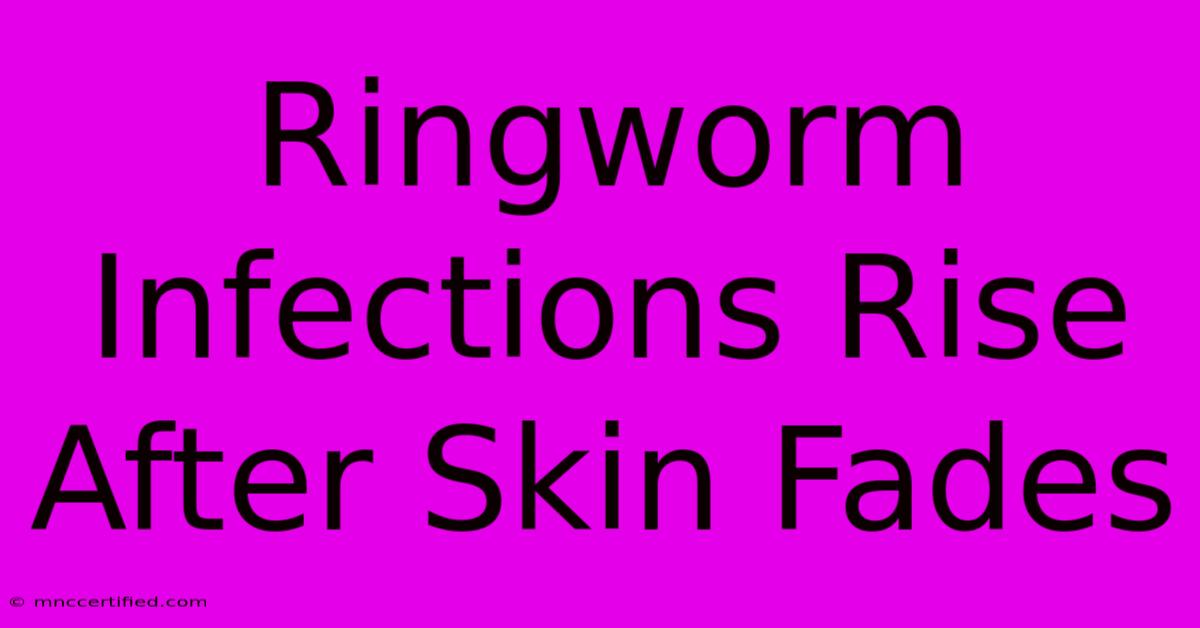Ringworm Infections Rise After Skin Fades

Table of Contents
Ringworm Infections Rise After Skin Fades: Understanding the Link and Prevention
Ringworm, a common fungal infection, isn't actually caused by a worm, but by dermatophytes—a type of fungus. While it can affect anyone, certain factors can increase susceptibility. Recently, there's been a noted increase in ringworm infections following skin fading treatments, a phenomenon requiring deeper understanding and proactive prevention. This article explores the connection between skin fading and ringworm, offering valuable insights for both those undergoing these treatments and healthcare professionals.
The Connection Between Skin Fading Treatments and Ringworm
Several skin fading treatments, often employed to lighten hyperpigmentation, can inadvertently compromise the skin's protective barrier. This compromised barrier makes the skin more vulnerable to fungal infections like ringworm. Here's why:
- Disruption of the Skin Barrier: Many skin lightening products contain harsh chemicals that can irritate and damage the skin's outermost layer, the epidermis. This damage weakens the skin's natural defense mechanisms, making it more susceptible to fungal invasion.
- Increased Inflammation: Some skin fading treatments can cause inflammation, which creates a favorable environment for fungal growth. Inflammation disrupts the skin's normal pH balance, allowing dermatophytes to thrive.
- Use of Steroids: The use of topical steroids, sometimes alongside skin lightening treatments, can further suppress the immune response, increasing the risk of fungal infections. Steroids weaken the body's ability to fight off fungal pathogens.
- Compromised Immune System: Individuals with underlying health conditions affecting their immune system are at a higher risk of ringworm infections, regardless of skin treatments. Skin fading treatments can exacerbate this risk.
Types of Skin Fading Treatments and Their Risks
Several skin fading methods can potentially elevate the risk of ringworm. These include:
- Hydroquinone-based creams: While effective, these creams can irritate and thin the skin.
- Chemical peels: These procedures exfoliate the skin, potentially damaging the barrier function.
- Microdermabrasion: This abrasive technique removes the outer layer of skin, leaving it vulnerable.
- Laser treatments: While precise, laser treatments can cause inflammation and disrupt the skin's barrier.
Symptoms of Ringworm After Skin Fading
Recognizing ringworm is crucial for timely treatment. Common symptoms include:
- Circular, scaly rash: The classic ring-like rash is often itchy and may have a raised border.
- Redness and inflammation: The affected area is usually red and inflamed.
- Itching and burning: Intense itching and a burning sensation are frequently reported.
- Hair loss (tinea capitis): If the scalp is affected, hair loss may occur.
Preventing Ringworm After Skin Fading
Prevention is paramount. Here are crucial steps to minimize the risk:
- Choose gentle products: Opt for mild, hypoallergenic skincare products, especially during and after skin fading treatments.
- Maintain skin hydration: Keep your skin well-hydrated with gentle moisturizers to support barrier function.
- Avoid harsh exfoliation: Limit harsh scrubbing and exfoliation to prevent further damage to the skin.
- Consult a dermatologist: Before undergoing any skin fading treatment, consult a dermatologist to assess your skin type and identify potential risks.
- Follow post-treatment instructions: Strictly adhere to your dermatologist's post-treatment instructions to promote healing and minimize complications.
- Maintain hygiene: Practice good hygiene, including regular showering and keeping the skin clean and dry.
- Avoid sharing personal items: Avoid sharing towels, clothes, and other personal items to prevent the spread of the fungus.
When to See a Doctor
If you notice any signs of ringworm after skin fading treatment, seek medical attention immediately. A dermatologist can diagnose the infection and prescribe appropriate antifungal medication. Early treatment is key to preventing complications and ensuring a speedy recovery.
Conclusion: Protecting Your Skin
The link between skin fading treatments and ringworm infections highlights the importance of responsible skincare practices. By understanding the risks and implementing preventative measures, you can significantly reduce your chances of developing this common fungal infection. Remember, consultation with a dermatologist is vital before, during, and after any skin treatment to ensure the safety and health of your skin.

Thank you for visiting our website wich cover about Ringworm Infections Rise After Skin Fades. We hope the information provided has been useful to you. Feel free to contact us if you have any questions or need further assistance. See you next time and dont miss to bookmark.
Featured Posts
-
Wall Street Memes Casino Review
Nov 23, 2024
-
Review Return To Paradise Rainy Night
Nov 23, 2024
-
Satellite Spots Chinese Aircraft Carrier
Nov 23, 2024
-
Bayerns 3 0 Win Over Augsburg Review
Nov 23, 2024
-
Excellent Football Recent Match Review
Nov 23, 2024